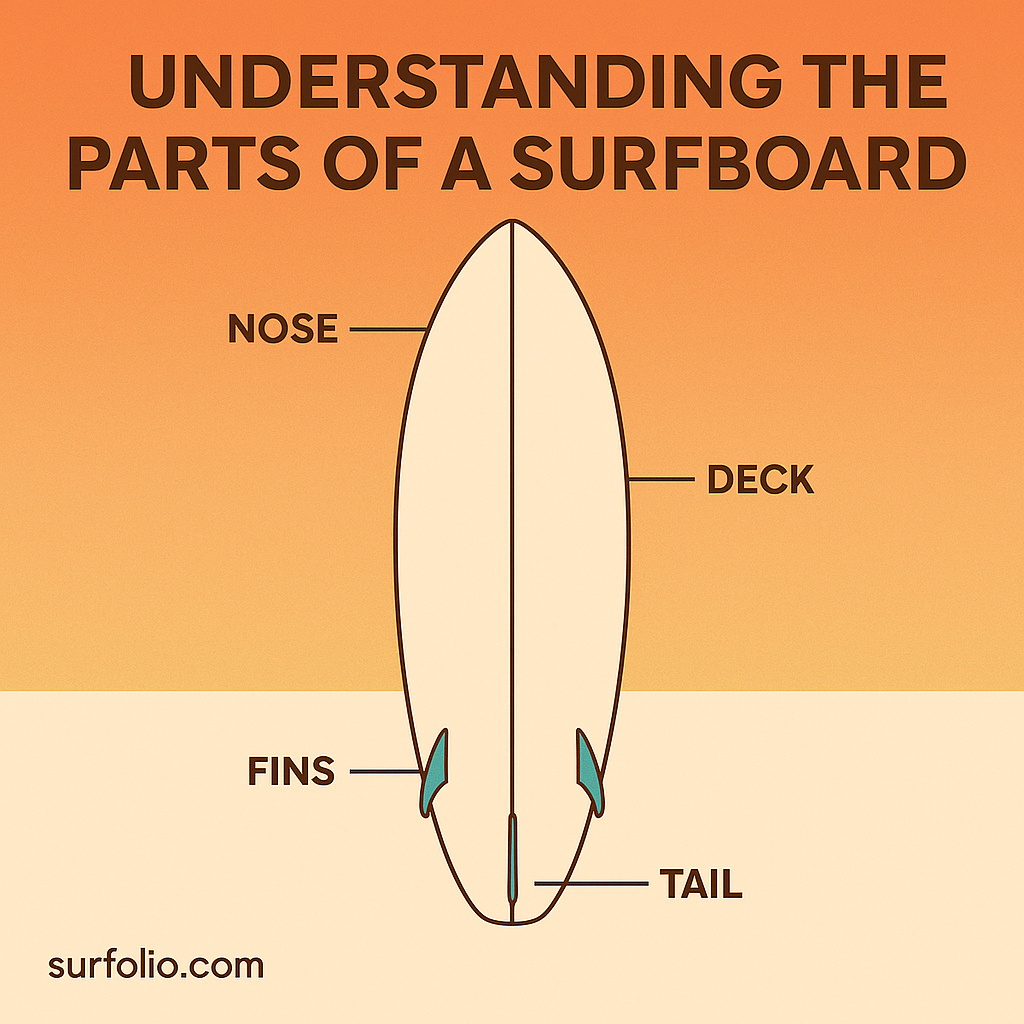
The Anatomy of a Surfboard
Whether you’re picking your first board or upgrading your setup, understanding a surfboard’s anatomy helps you choose the right shape for your surf style. Every curve and edge plays a role in how the board moves, turns, and floats.
Key Surfboard Parts Explained
1. Nose
The front of the board that first meets the wave.
- Rounded noses add stability and floatation for beginners.
- Pointed noses slice through waves better for advanced maneuvers.
2. Tail
The back end that affects turning and release.
- Squash tails offer balance and control.
- Pin tails hold tight in bigger waves.
- Fish tails add looseness and speed in smaller surf.
3. Rails
The edges running along both sides of the board.
- Soft rails are forgiving and smooth in turns.
- Hard rails provide bite and speed.
The rail shape influences how much water wraps around the board—crucial for both grip and glide.
4. Deck
The top surface you stand on.
- Typically waxed or covered with traction pads for grip.
- Flatter decks are stable; domed decks allow faster edge-to-edge transitions.
5. Bottom (Base)
The underside controls speed and lift.
Common contours include:
- Flat bottoms for predictable glide.
- Single concaves for drive and speed.
- Double concaves for smoother rail-to-rail flow.
6. Fins
The fins give direction, stability, and control.
- Single fin = smooth and classic feel.
- Twin fin = looser, playful turns.
- Thruster (3-fin) = balanced and versatile.
- Quad fin = fast, great for bigger waves.
7. Stringer
A thin wood strip that runs down the center of many surfboards. It adds strength and stiffness, helping the board maintain its shape.
8. Leash Plug
The small insert on the tail where your leash connects—simple but essential for keeping your board close after a wipeout.
How the Parts Work Together
Think of a surfboard like a musical instrument—each part must be in harmony. The combination of nose shape, tail design, rail thickness, and fin setup determines how the board paddles, drops in, and carves.
For beginners, wider boards with rounded noses and softer rails make learning easier. Advanced surfers often choose narrower, thinner boards with harder rails for speed and responsiveness.
Quick Pro Tip
When testing a new board, pay attention to how it feels through your feet. The feedback from the rails, tail, and fins tells you a lot about your ideal surf style.
Final Thoughts
A surfboard isn’t just a piece of equipment—it’s a living design of balance, flow, and control. Knowing how each part functions helps you make smarter choices, whether you’re buying new gear or fine-tuning your current setup.
